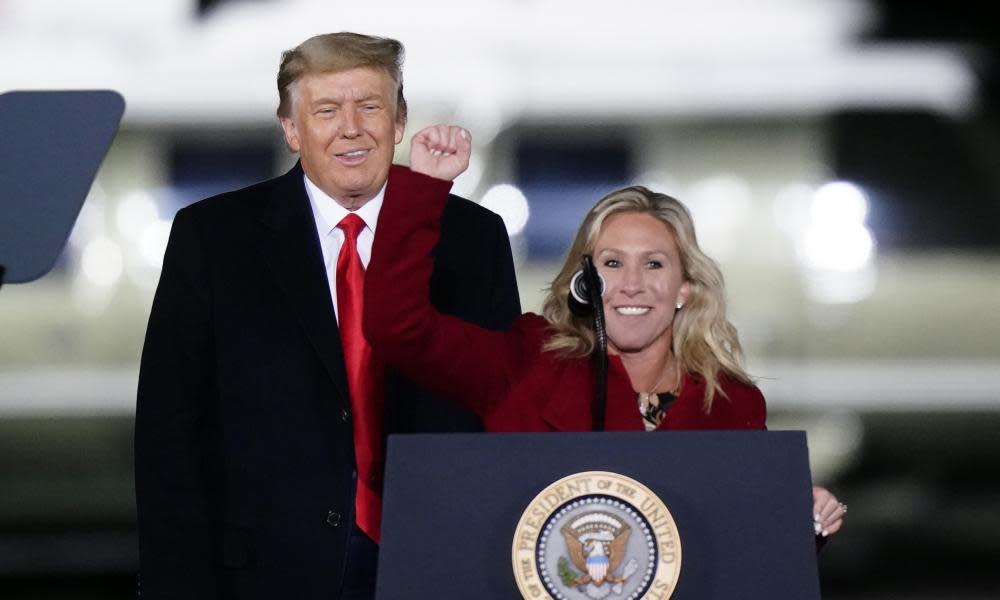The Guardian view on an America First Caucus: a warning democracy is under siege

In 1944, George Orwell felt that the word fascism had “lost the last vestige of meaning” so liberally had it been used. But fascism remains very much alive. Decades after Orwell’s message, one of the challenges today is to identify and name it. Whether the label could be applied to Donald Trump had divided expert opinion, until the 6 January assault on Capitol Hill by a mob whose passions had been inflamed by his speech earlier that day. This melted the resistance historians of fascism like Columbia University’s Robert Paxton felt to using the f-word. The use of violence against democratic institutions, he wrote, “crosses a red line”.
If anyone wondered what American fascism might look like then they could start with the proposed congressional “America First Caucus”, which emerged this weekend from the office of extremist Republican Marjorie Taylor Greene. Carrying the torch for Trumpism, this fringe agenda conceals its racial argument behind muscular populist ones. The caucus plans were welcomed by legislators who had fanned the flames of the Capitol riot. Before being elected to Congress, Ms Greene peddled conspiracy theories, made racist statements and indicated support for the execution of Democratic leaders and FBI agents. She renounced those beliefs on the eve of being kicked off congressional committees but made no apology for having held them.
The proposed caucus platform contained not so much dog whistles as foghorns for white supremacy. America, the document claims, is based on “respect for uniquely Anglo-Saxon political traditions” and decries “post-1965 immigrants” for depressing workers’ wages, highlighting the year when the US ended its policy of giving preferential treatment to western European migrants. It calls for rebuilding the US with an “aesthetic value that befits the progeny of European architecture”. Thankfully the plan exploded on the launch pad. Republican leaders calculated it would hurt their electoral chances in moderate swing seats. Ms Greene disowned the caucus proposals.
Fascism not only pursues rightwing policies, it seeks to build up mass-mobilising movements and paramilitary organisations with the aim of establishing a single-party dictatorship. Mr Trump saw armed citizens as a political asset. His heirs see despotism as a viable alternative to the current political structure. In Congress 147 Republican lawmakers promoted Mr Trump’s lie that the 2020 election was stolen. Republicans in 47 states have 361 proposed laws to restrict voting access on grounds of baseless claims of electoral fraud.
Around the world electorates will have to become reacquainted with fascism. Voters must attune themselves to what it looks and sounds like. In the UK, Labour’s Sir Keir Starmer was caught out earlier this year on a national radio phone-in when he failed to recognise a conspiracy theory popular with fascists, and Fox News star Tucker Carlson, known as the “great replacement”. It falsely claims that dwindling white birthrates have been orchestrated by multicultural global elites in an attempt to make whites a minority. There’s no suggestion that Sir Keir agreed with the racist caller but there was criticism in the way he handled the call. There is an urgent and pressing need to recognise both the real threat of fascism as well as the rhetorical and emotional motifs it employs.

 Yahoo Movies
Yahoo Movies 
